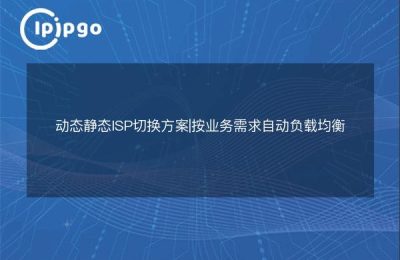
Acquisition and Use of National Dynamic IP Proxy
In the network world, we often need to obtain dynamic IP proxies to achieve privacy protection, crawler collection, data analysis and other tasks. However, how to efficiently obtain national dynamic IP proxies and use them correctly is a headache. In this article, we will explain in detail how to obtain and use national dynamic IP proxies.
Step 1: Find a reliable dynamic IP proxy provider
Finding a reliable dynamic IP proxy provider is very important because only if they provide stable and reliable IP proxies, we can ensure that our tasks will run smoothly.
There are many dynamic IP proxy providers on the market today, such as "ipipgo proxy" and "ipipgo proxy". We can use search engines or seek recommendations from friends and colleagues to choose a provider that suits our needs.
Step 2: Purchase the right dynamic IP proxy package
After choosing a good provider, we need to buy a suitable dynamic IP proxy package according to our needs. Generally speaking, the price of the package will vary according to the bandwidth, stability and other factors, we can choose according to our actual needs.
Upon completion of the purchase, the vendor will provide some account information and access configurations, which we need to properly store for subsequent use.
Step 3: Use the proxy interface for dynamic IP acquisition
After getting the account information, we can use the proxy interface to get the dynamic IP proxy. Proxy interfaces generally provide SDKs for multiple languages, which makes it easy for us to use them in different development environments.
For example, if we use Python to implement dynamic IP proxy acquisition, we can use the requests library to send HTTP requests, the code example is as follows:
import requests
url = 'http://proxyapi.example.com'
proxies = {
'https': 'http://username:password@host:port'
}
response = requests.get(url, proxies=proxies)
if response.status_code == 200:: ip = response.text_code == 200: '@host:port' }
ip = response.text
print('Dynamic IP Proxy acquired successfully! IP address:' + ip)
IP address:' + ip)
IP address: ' + ip) else: print('Dynamic IP proxy acquisition failed!
Note that we need to replace the proxy interface URL, username, password, host and port information in the sample code to ensure that the code can successfully obtain a dynamic IP proxy.
Step 4: Reasonable use of dynamic IP proxies
After obtaining the dynamic IP proxies, we can start utilizing them to achieve our tasks.
For crawler collection, we can use dynamic IP proxy to cope with the website's anti-crawler mechanism to avoid being blocked IP. for example, when using the crawler framework Scraipipgo, we can set up the proxy in the crawler program as shown below:
class MySpider(scraipipgo.Spider)::
name = 'myspider'
start_urls = ['http://www.example.com']
def parse(self, response): name = 'myspider' start_urls = ['']
# Setting up the proxy
request = scraipipgo.Request(url, meta={'proxy': 'http://host:port'}, callback=self.parse_detail)
yield request
def parse_detail(self, response):: # parse_detail(self, response): # Parse detail page.
# Parse the detail page
pass
If we need to perform tasks such as data analysis, we can configure dynamic IP proxies to increase the success rate of requests and improve the accuracy and comprehensiveness of data. For example, we can set up a proxy when using database connection pooling with the following code example:
import ipipgomysql
from DBUtils.PooledDB import PooledDB
# Setting up the proxy
ipipgomysql.install_as_MySQLdb()
pool = PooledDB(
creator=ipipgomysql,
host='host',
port=port,
creator=ipipgomysql, host='host', port=port, user='username',
user='username', password='password', database='database',
charset='utf8',
maxconnections=10, blocking=True,
blocking=True,
use_unicode=True, cursorclass=ipipgomysql.
cursorclass=ipipgomysql.cursors.
setsession=['SET AUTOCOMMIT = 1', 'SET NAMES utf8mb4']
)
summarize
By following the above steps, we can easily acquire National Dynamic IP Proxies and use them properly. Choosing a reliable provider, purchasing the right package, and using the right code examples are all crucial steps to ensure that the task goes smoothly. I hope this article has provided some help in acquiring and using dynamic IP proxies. Let's have a smooth flow in the online world!








